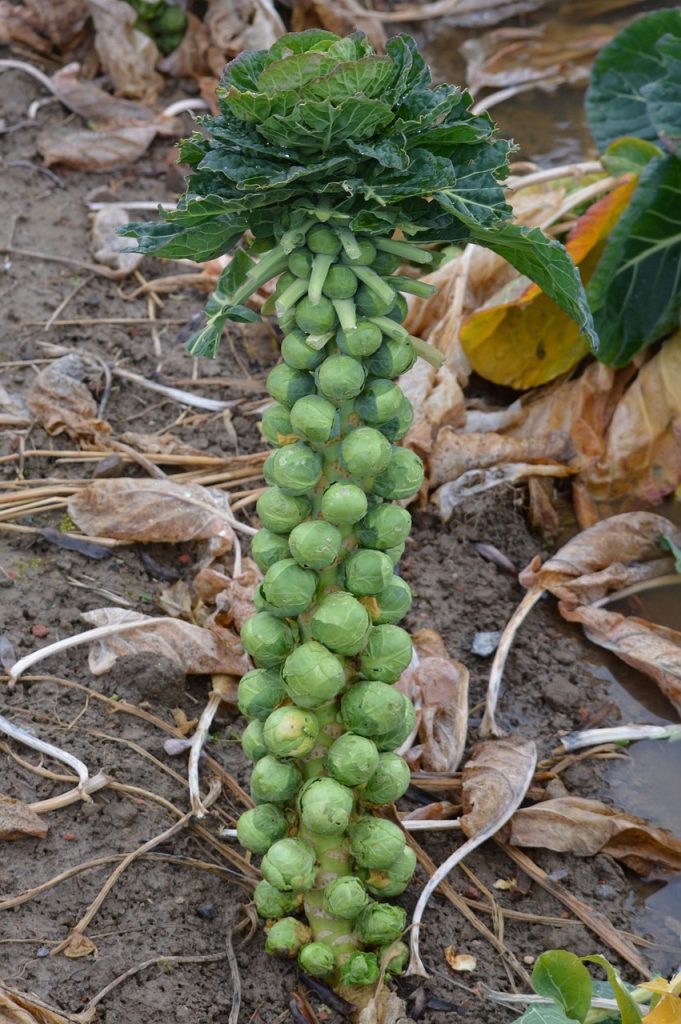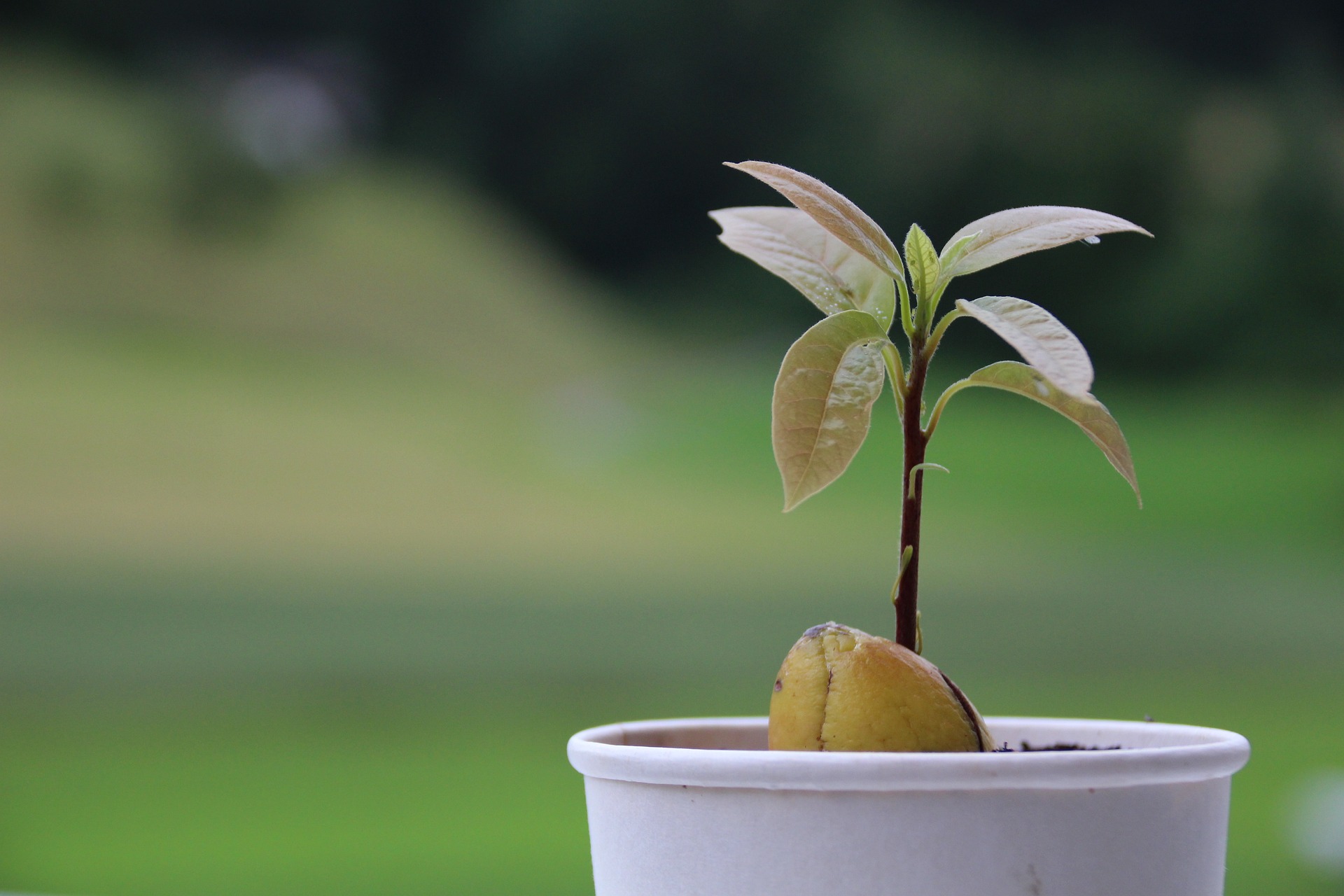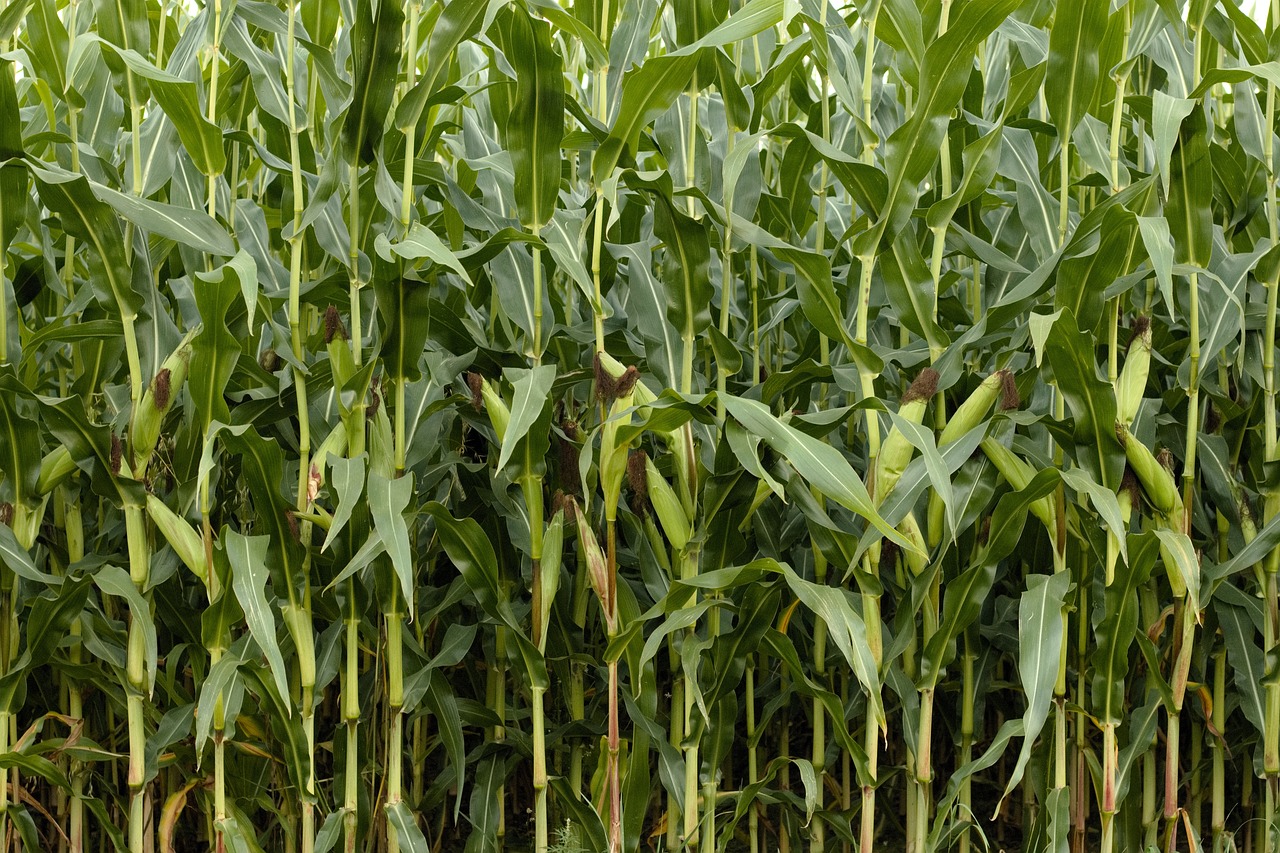In a garden, brussels sprouts offer a multifaceted beauty, from their lush green foliage to the small compact sprouts that look like miniature cabbages growing in neat rows along a sturdy stem and their tall stalks that offer a vertical element in a garden.
Brussels sprouts are a highly nutritious vegetable which can be enjoyed while roasted, sautéed, steamed, or raw, making it a wonderful addition to a vegetable garden.
Here’s a complete guide on how to grow and care for Brussels sprouts:

Description
Brussels sprouts are a type of cruciferous vegetable belonging to the Brassicaceae family, which also includes other vegetables like cabbage, broccoli, and kale.
Brussels sprouts resemble miniature cabbages, typically about 1 to 1.5 inches in diameter. They grow in clusters along a thick, upright stem that can reach up to 2-3 feet in height. The sprouts are usually green, though some varieties may have a slightly reddish or purple tint. The leaves are tightly packed, forming a dense, rounded bud. Each sprout is made up of overlapping layers of leaves that are tender on the inside and slightly tougher on the outer layers.
Brussels sprouts can be prepared in various ways, including roasting, steaming, sautéing, and grilling. They can be served as a side dish, incorporated into salads, or added to other recipes for added texture and flavor.
| Botanical name: Brassica oleracea var. gemmifera | Propagation: Seeds |
| Common name: Brussels sprouts | Soil type: Loamy, sandy loam |
| Plant type: Biennial | Soil pH: 6.0-7.5 |
| Family: Brassicaceae | Temperature: 45°F to 75°F |
| Hardiness zones: USDA zones 3-9 | Light: Full sun |
| Mature size: 2-3 ft. tall, 1-2ft. wide | Spacing: 18-24 inches |
| Flower color: Yellow | Pollination: Bees |
| Time to harvest: 90-100 days | Toxicity: Non toxic |
| Native area: Mediterranean |
Temperature requirements
Brussels sprouts grow well in cooler temperatures. They grow best when the average temperature is between 45°F to 75°F (7°C to 24°C). However, they can tolerate temperatures as low as 20°F (-6°C) and as high as 80°F (27°C) for short periods. Extreme heat can cause the plants to bolt (produce flowers prematurely) and negatively affect the flavor of the sprouts.
Soil requirements
Brussels sprouts prefer well-drained soil that is rich in organic matter. The ideal soil pH for Brussels sprouts is between 6.0 and 7.5. It’s important to prepare the soil by incorporating plenty of compost or well-rotted manure before planting to ensure good fertility and drainage. Additionally, Brussels sprouts are heavy feeders, so providing a balanced fertilizer during the growing season can help promote healthy growth and development.
Light/Sun requirements
Brussels sprouts require full sun for optimal growth and productivity. They need at least 6 to 8 hours of direct sunlight each day to develop properly. While they can tolerate some partial shade, too much shade can result in leggy growth and poor formation of sprouts. Planting them in a location that receives ample sunlight throughout the day will ensure that they thrive and produce a bountiful harvest.
When to plant Brussels sprouts
Brussels sprouts are typically planted in the late spring or early summer for a fall harvest.
If you’re starting from seeds indoors, you’ll want to sow them indoors about 12 weeks before your last expected frost date. This allows the seedlings to develop and become sturdy before transplanting them outdoors.
For direct seeding or transplanting outdoors, you’ll want to wait until the soil has warmed up and the danger of frost has passed. This is usually around 2 to 4 weeks before your average last frost date.
In warmer climates where frost is less of a concern, Brussels sprouts can also be planted in late summer for a winter harvest.
Garden preparation
Work the soil to a depth of about 12 inches (30 cm), incorporating plenty of organic matter such as compost or well-rotted manure. This improves soil structure, fertility, and drainage, providing an ideal growing environment for Brussels sprouts.
Brussels sprouts are heavy feeders, so it’s beneficial to add a balanced fertilizer or a fertilizer high in nitrogen to the soil before planting. Follow the recommendations on the fertilizer package for application rates.
Planting
If starting from seeds indoors, sow them in seed trays or pots filled with seed starting mix about 1/4 inch (6 mm) deep. Keep the soil consistently moist and maintain a temperature of around 70°F (21°C) for optimal germination. Transplant the seedlings outdoors when they are about 6 to 8 weeks old and have developed sturdy stems.
Plant Brussels sprouts about 18 to 24 inches (45 to 60 cm) apart in rows spaced 30 to 36 inches (75 to 90 cm) apart. This provides enough space for the plants to grow and access sunlight.
Dig holes slightly larger than the root balls of the seedlings. Place the seedlings in the holes and backfill with soil, gently firming it around the base of the plants. Water thoroughly after planting to settle the soil and provide moisture to the roots.
Direct seeding: Sow seeds about 1/2 inch deep and 3-4 inches apart in rows that are 24-36 inches apart. Once seedlings are 4-6 inches tall, thin them to stand 18-24 inches apart.
How to Care for plants
Watering: Keep the soil consistently moist but not waterlogged. Water deeply and regularly, especially during dry periods. Ensure that the soil is evenly moist, as inconsistent watering can lead to problems like splitting or bolting.
Mulching: Apply a layer of organic mulch around the base of the plants to help retain moisture, suppress weeds, and regulate soil temperature. Mulching also helps prevent soil compaction and erosion.
Fertilizing: Brussels sprouts are heavy feeders and require regular fertilization for optimal growth. Apply a balanced fertilizer or a fertilizer high in nitrogen at planting time, and then continue to fertilize every 4-6 weeks throughout the growing season.
Support: Tall varieties of Brussels sprouts will benefit from staking or support cages to prevent them from bending or toppling over as they grow taller. Install stakes or cages early in the growing season to provide support as the plants mature.
Weeding: Keep the area around Brussels sprouts plants free of weeds, as weeds can compete with the plants for nutrients, water, and sunlight. Regularly remove weeds by hand or use mulch to suppress weed growth.
Pruning: Remove any yellowing or damaged leaves from Brussels sprouts plants to promote airflow and reduce the risk of disease. You can also prune the lower leaves as the plants grow to improve air circulation and focus energy on sprout development.
Harvesting Brussels sprouts
Brussels sprouts are typically ready to harvest about 90 to 100 days after transplanting, or 100 to 200 days after sowing from seed, depending on the variety. The sprouts should be firm, tight, and about 1 to 2 inches in diameter.
Begin harvesting Brussels sprouts from the bottom of the stalk and work your way up. The lower sprouts mature first, while the upper ones continue to develop.
To harvest a Brussels sprout, hold the stem below the sprout with one hand and use the other hand to twist the sprout upward until it snaps off the stem. Alternatively, you can use scissors or pruning shears to cut the sprout from the stem.
As you harvest the sprouts, you may remove some of the lower leaves from the stalk to make it easier to reach the sprouts. However, leave the upper leaves intact to continue supporting the growth of the remaining sprouts.
Brussels sprouts can be harvested over a period of several weeks as they mature at different rates. Harvest them as needed, or if frost is forecast, harvest all remaining sprouts before the first hard frost, as frost can damage the flavor and quality of the sprouts.
Storage
Brussels sprouts can be stored in the refrigerator for up to a week after harvesting. Prior to refrigerating, place them in a perforated plastic bag or in a container with a damp paper towel to help maintain moisture.
Managing pests and diseases
Constantly monitor plants for pests such as aphids, cabbage worms, and cabbage loopers. Use organic pest control methods like handpicking, neem oil, or insecticidal soap. Rotate crops yearly to prevent disease buildup in the soil.




